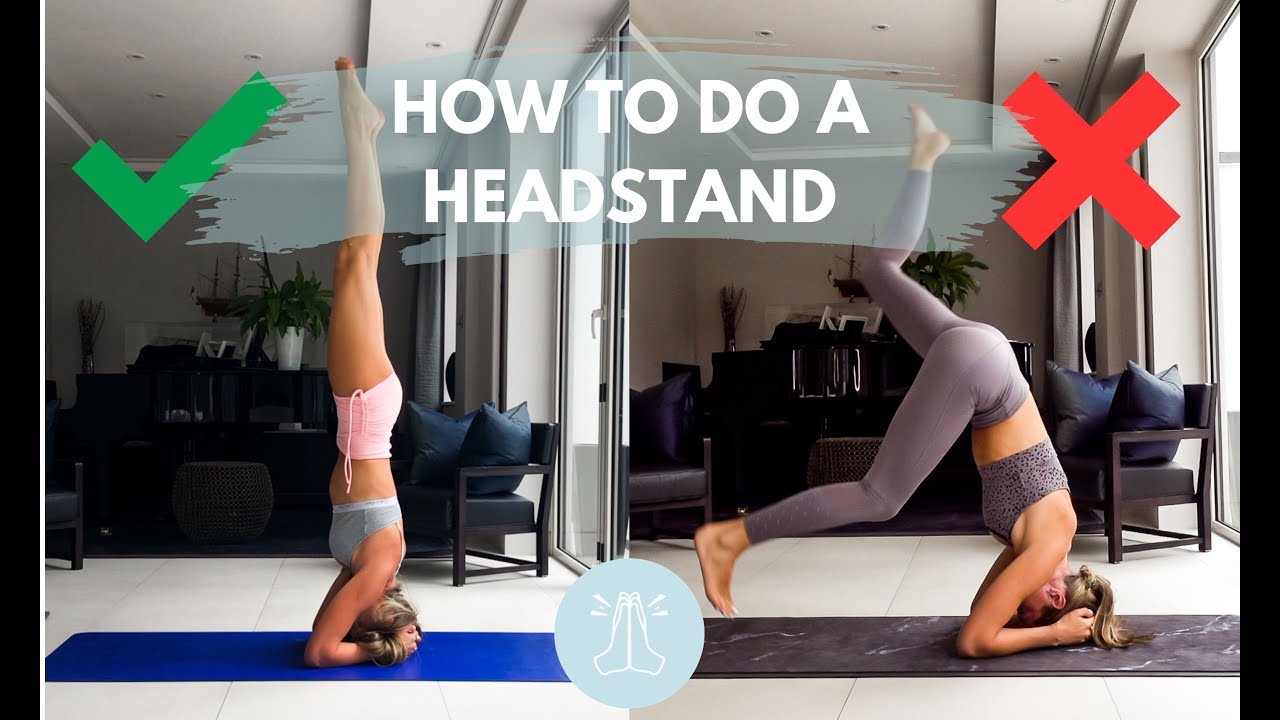
You might be curious about which exercise method is best for your body. If so, there are a few factors you should keep in mind. Continue reading for more information. Both are great options for developing strength and flexibility. Both require breathing techniques in order to improve your posture. For those looking for a deeper meditation practice, yoga is the way to go. Pilates is recommended for people recovering from injury, or who wish to strengthen their core muscles.
Yoga and Pilates make excellent choices for beginners. While yoga places a lot of emphasis on the mind, Pilates is all about the body. Both workouts include mats that help with flexibility and muscle strength. Both encourage a connection between the body and mind. Although yoga is slower-paced, more meditative and less intense than Pilates for its benefits, they are still very beneficial. Even though there are differences, the benefits of both types of exercise can be quite different.
Yoga is a great place for those who have never exercised before. A beginner's class will include soft stretches and simple yoga poses. Both systems train the nervous system. As a result, they can be effective for a variety of conditions, from incontinence to physical pain. Both are good for the mind and your body. Think about your personal goals and current state of health when comparing Pilates to yoga.

Both are good for different body parts. Both workouts are suitable for beginners. While yoga is more mental-meditative and focused on the mind, Pilates is more about the body. Before you commit, it is important for you to understand the differences. Each has its pros and cons, so make sure you choose the one that is right for your needs. Below are some benefits to each.
Yoga is more beneficial for sports recovery than Pilates, which incorporates breathing exercises as well as stretch-out techniques. Both can be useful for improving posture or preventing injuries in sports. Each exercise has its benefits but it is important that you know which one is best for you. There are a few pros that can help you decide which option is best for you. Do your research and find the best one for you.
Both yoga and Pilates can be used to improve your mind-body. Both yoga and Pilates focus on breathing, stretching, and can be very beneficial for your health. You should always consult your doctor before you attend a class. Certain exercises may be hazardous for those with certain medical conditions. To make the most out of both, you need to decide which method is best for your situation. Both styles can be used to your advantage. The one that is most effective for your needs is the best!
The most important differences between Pilates and yoga are mainly due to the type of exercise that you are doing. Both focus on strengthening the body and stretching it. Both use a mat for their exercises. The difference is which exercise suits you best. Yoga focuses on your body, while Pilates is focused on the mind. Both focus on the breath and posture. This will lead to better health over time.

Although both methods target muscle toning and stretching respectively, they do have their own goals. For example, Pilates focuses on mind and muscles while yoga focuses primarily on stretching and strengthening them. It teaches breathing techniques as well as aligning your mind and spirit. Both approaches complement each other and are not meant to be used in competition. Both are great for people who have different fitness goals. They differ in the way they work out.
Both are great options for beginners. Yoga is a great place to start if you aren’t very active. For beginners, there are many yoga poses that can be done. Both movements require the use props. What you like to meditate or do Pilates is the most important difference between yoga and Pilates. You can choose either if you aren't sure.
FAQ
What is a good daily gym routine?
Regular exercise is key for staying in shape. It doesn't matter which type of fitness you choose, as long as it is done regularly. The key thing is consistency. You must be consistent if you are to see results.
Begin with a small amount of daily exercise (like walking). Then gradually increase the time spent exercising until you spend 30 minutes a day working out. This could include running, cycling, swimming, weight training, yoga, or aerobics classes.
Try to make sure you exercise on all days of the week. You should not miss any sessions unless there is a good reason.
Wear appropriate clothing and footwear when exercising outdoors. It is important to take into account the weather conditions, and how they may affect your ability to exercise safely.
While exercising, make sure to drink plenty water. Drinking alcohol at this time can lead to dehydration. Caffeinated beverages such as tea, coffee, and cola should be avoided. These drinks may give you energy but also dehydrate your body.
At first, it's normal to feel tired after you finish your exercise routine. You'll feel more energetic and refreshed if you keep going with your exercise program.
Is Cardio Better Than Strength Training?
Both are equally good. However, cardio is more effective if you're looking to bulk up faster.
Cardio burns a lot more calories per minute that strength training and is more effective at burning fat.
Strength training increases muscle mass but takes more time than cardio.
Is it true, that too much protein can cause kidney stones?
Protein helps to maintain healthy bones, tissue, and skin. Over-consuming protein can result in calcium being excreted through the kidneys. This can lead to kidney stone formation.
It is important that you note that not all people develop kidney stones when they consume more than 2 grams of protein per kg (2.2 pounds). Some people can eat high amounts of protein without getting kidney stones.
You can prevent kidney stones by watching your sodium consumption. The kidneys regulate the amount of sodium they consume. Too much sodium can lead to kidney stones.
You can also try reducing your protein intake if you get kidney stones. Protein accounts for about half the daily caloric requirement of most adults. Reduce your intake of protein and you will likely lose weight.
If you do decide to eat more protein, don't go overboard. Limit your intake to 20% of your total daily protein intake.
How Metabolic health is key to aging well
People live longer lives than ever before. However, as they age, so do their chances of getting sicker. And while we've made great strides in medical science, it's becoming increasingly clear that our current approach isn't working.
We have to change how we see health and aging. To achieve healthy aging, we must look at metabolic health as more than just weight loss. It is also important to consider overall wellness.
To live a full and active life, your metabolism should be healthy all your life.
The good news? There are many things you can do to improve your metabolism. These 7 foods can be incorporated into your diet.
-
Resveratrol in blueberries has been shown to support cell longevity. They also provide antioxidants and vitamins C & E.
-
Pinto beans and lentils make excellent sources of fiber as well as plant-based protein. These nutrients keep blood sugar levels stable so that they don't spike or crash.
-
Broccoli's sulforaphane has been shown to protect DNA from damage in research. It could even slow down the growth of cancer.
-
Chia Seeds have high levels of omega-3 fatty oils and fiber. They are rich in protein and antioxidants. All of these nutrients are good for heart health, brain function, gut health, and overall health.
-
Green Tea contains polyphenols called catechins. Green tea catechins have been shown to reduce bone fractures, heart disease, cognitive decline, diabetes risk, and other health issues.
-
Salmonis high in protein and rich in vitamin D is one of the most popular sources of lean proteins.
-
Walnuts are rich in omega-3s as well as antioxidants such alpha lipoic acids (ALA). ALA aids in energy production and protection against inflammation.
What is the Best Workout for Men Over 40 Years?
The best workout for older men usually increases energy and stamina.
It is important for you to know that over 40s experience a reduction in testosterone which can lead to lower sex drive.
However, this doesn't mean you cannot still enjoy physical activity. Many studies show that regular aerobic exercise can boost testosterone in some men.
So, if you want to improve your sexual performance, you can start with an aerobics routine.
Statistics
- Cardmembers earn 5% Back at Amazon.com with a Prime Credit Card. (amazon.com)
- According to the American Academy of Dermatology (AAD), men over 50 are at a heightened risk of developing it. (healthline.com)
- According to the American Heart Association, blood pressure should be checked at least once every two years, beginning at age 20. (my.clevelandclinic.org)
- By John Thompson Take a whopping 38% off a set of PowerBlock Pros. (menshealth.com)
- Get free shipping and 25% off today. (healthline.com)
External Links
How To
What nutrients does a man require daily?
Men require daily nutrition for healthy growth and development. Vitamins, minerals, vitamins, nutrients, carbohydrates, fats and fiber are all essential for the body.
Males also require specific nutrients at certain times of the day. To give you an example, the body uses energy it receives from food to make hormones and antibodies. Protein is needed to build muscles and repair tissue damaged when you wake up.
Your body burns fat at night and stores it as energy as glycogen. During this time, your body needs fewer calories but still needs sufficient nutrients. You might have an occasional snack during the night if your stomach is feeling hungry.
To fuel your muscles while you train, you will need sufficient carbs as well as protein. Muscle soreness can occur if you work out hard.
To prevent this from happening, you need to consume carbs or protein within two hours. To get energy from glucose, your body will start to degrade stored glycogen.
You must also eat protein right after you finish your workouts. This prevents muscle tissue loss that happens while you sleep.
Your body makes lactic acid when you are doing intense physical activities. It is a form of lactic acid that builds up in the bloodstream. This causes fatigue. You can avoid this by eating carbohydrates-rich foods like fruits and veggies.
Carbohydrates provide energy for your body to recover after strenuous exercise.
You may also want to include lean meats and fish, as well as yogurt, cheese, yogurt, beans and nuts in your diet.
All these foods are high-quality sources of protein. Protein promotes muscle growth and repairs damaged tissues. Protein also supplies the amino acids your body requires to make sex hormones, such as testosterone.
You also need enough dietary fats to maintain good skin, hair, nails, and joints. Healthy men should consume between 20% to 35% of their daily caloric intake from fat.
Fat helps protect your heart health and prevents cancer. It helps keep your brain working properly.
Vegetable oils such as sunflower oil and soybean oil can provide most of your fat needs.
These oils are high-in monounsaturated, unsaturated fatty acid (MUFAs). MUFAs reduce cholesterol and inflammation. They protect your cells from damage by free radicals.
Saturated oils (SFAs), found primarily in animal products such meats, dairy products and butter, are known to raise LDL ("bad") cholesterol. SFAs can raise LDL ("bad") cholesterol levels and increase triglycerides. They promote weight gain and abdominal fat.
Polyunsaturated oils (PUFAs), are found in plant-based foods like nuts, seeds and vegetable oils. PUFAs are good for your heart health and help to reduce inflammation. They can also control blood sugar levels and cholesterol.
Low HDL ("good") cholesterol can lead to erectile problems in men. Saturated fats are a major source of bad cholesterol. This lowers good cholesterol.
Men who eat a lot of red meat or pork develop prostate problems because they contain large amounts of nitrates. If cooked at high temperatures, the nitrates become nitrosamines. These compounds can lead to cancer.
Nitrites and other harmful chemicals are common in processed meats. Avoid them completely.
The American Heart Association recommends that you limit your intake of red meat to 2 per week. Choose poultry, fish and legumes instead.